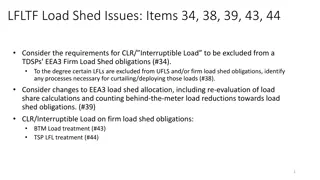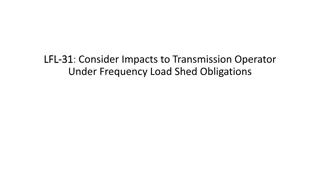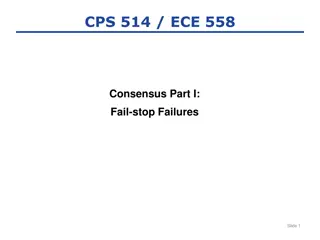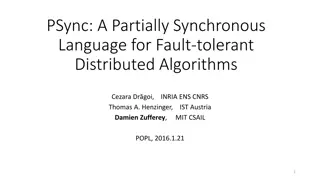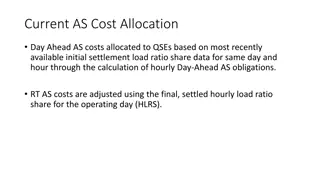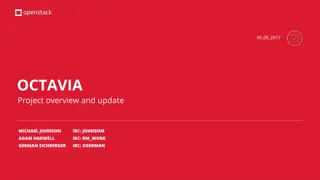Fault-tolerant and Load-balanced VuFind Project Overview
Project Background: Part of the National Digital Library initiative, the VuFind project aims to provide a discovery interface for Finnish archives, libraries, and museums. It started development in 2012 due to the insufficiency of existing commercial products. The focus is on enhancing fault tolerance and load balancing to minimize downtime and improve user experience. Architecture Overview: The project employs fault-tolerant and load-balanced infrastructure using VuFind, MariaDB with Galera Cluster, Solr 5 with SolrCloud, Shibboleth Service Provider, and Red Hat Satellite. Hardware architecture includes Cisco ACE for load balancing and a VMware cluster for hosting front-end servers. Additional Hardware: Various additional servers are utilized to distribute load and ensure the stability of different services. This setup aims to maintain balance across front-end servers, with specific servers designated for harvesting and indexing tasks, staging, development, and Piwik analytics.
Download Presentation

Please find below an Image/Link to download the presentation.
The content on the website is provided AS IS for your information and personal use only. It may not be sold, licensed, or shared on other websites without obtaining consent from the author.If you encounter any issues during the download, it is possible that the publisher has removed the file from their server.
You are allowed to download the files provided on this website for personal or commercial use, subject to the condition that they are used lawfully. All files are the property of their respective owners.
The content on the website is provided AS IS for your information and personal use only. It may not be sold, licensed, or shared on other websites without obtaining consent from the author.
E N D
Presentation Transcript
Fault-tolerant and Load- balanced VuFind Ere Maijala VuFind Summit 2015
Project Background Part of the National Digital Library initiative A discovery interface for all Finnish archives, libraries and museums Initially based on a commercial product Insufficient for the needs Development of VuFind-based service started in the beginning of 2012 Older services had planned (and unplanned) downtime due to updates, backups, configuration changes etc. Try to make things better this time
Whats Fault Tolerance and Load Balancing About Fault tolerance in this case means that the loss of a front-end server causes (mostly) no problems that end-users would see Depending on load balancer configuration some transiest request failures may occur Load balancing allows to use a few smaller servers instead of a big one and makes it easier to scale further Can be implemented in different ways Here each server includes all services critical to VuFind No sticky sessions Requests and thus user sessions not bound to a single server
Main Software Components VuFind MariaDB with Galera Cluster Solr 5 with SolrCloud Shibboleth Service Provider Red Hat Satellite
Hardware Architecture A hardware load balancer In our case Cisco ACE Software based solutions such as HAproxy also possible, probably also more versatile (but one more server adds a single point of failure) VMWare cluster for servers 3 front-end servers each running VuFind, MariaDB and Solr
Additional Hardware Try to handle other load on separate servers to keep load on each front-end server as symmetric as possible 1 back-end server handling harvesting and indexing Keep load on each front end server in balance 1 front-end staging server 1 front-end and 1 back-end development server For Piwik 1 primary server and 1 hot standby server using MariaDB master-slave replication
Load Balancer Set up to distribute requests randomly between servers Uses VuFind s /AJAX/SystemStatus service to check server health Set up to use X-Forwarded-For header in requests to front- end servers Service s DNS entry points to the load balancer
VuFind and Apache Identical installations on each front-end server mod_rpaf used in Apache to map IP address from X-Forwarded-For to normal Apache fields No special logic needed in other software components VuFind set up to fall back to another Solr instance if the local one is down VuFind s /AJAX/SystemStatus set up to use a health check file that can be used to drop the server from load balancer Scheduled tasks like cleaning up of expired searches done on one front-end AlphaBrowse indexing needs to run on all servers
MariaDB Galera Cluster One node on each server providing a cluster Each VuFind connects to the local MariaDB node Percona XtraBackup used for online backups Non-blocking backups Needs TCP ports 3306 4444 4567 and 4568
SolrCloud Currently a basic three node installation One node on each front-end server No shards, just replicas for now Each replica will probably be split into two shards in the future External Zookeeper nodes on each server Updates are automatically distributed to all nodes No need for the harvesting/indexing service to be aware of SolrCloud provided it uses HTTP Solr needs TCP port 8983 by default (8080 in VuFind s) Zookeeper needs TCP ports 2181, 2888 and 3888
Shibboleth Use ODBC for storage Data stored in the MariaDB cluster State available on each server so no sticky sessions required Needed to tweak configuration with VuFind 1 so that performance didn t suffer with high server loads <DirectoryMatch "/data/finna"> Options FollowSymLinks AllowOverride All Order allow,deny Allow from all # AuthType shibboleth # require shibboleth </DirectoryMatch> <FilesMatch "index.php"> AuthType shibboleth require shibboleth </FilesMatch>
Red Hat Satellite Configuration file management Package management Can be used to execute commands On an external server A bit clumsy at times E.g. Puppet is also a popular choice
Benefits Fault-tolerance One or even two of three front-end servers can be down without affecting end user experience (apart from possible performance issues) Load-balancing and scalability It s typically less expensive to add servers than to increase their capacity Rolling upgrades (no downtime) E.g. restarting Solr on one server can be done without interrupting the service
Downsides Caches are local to each server, so e.g. hierarchy trees must be built on each server Shared disk or cache in database? AlphaBrowse indexes must be available on all servers Generate in all or distribute from one to the others AlphaBrowse won t work with a sharded Solr index Solr s MoreLikeThis query handler doesn t work with distributed (sharded) indexes Need to investigate the new MLT handler that s feature complete in Solr 5.3 Piwik doesn t work well in a load-balanced environment On its own server Could maybe use QueuedTracking with Redis Cluster
Pitfalls Static file modification times Need to be the same on all servers or caching won t work ETag A simple hash identifying a file Default Apache configuration will break caching Alternative Apache configuration: FileETag MTime Size SolrCloud distributes queries randomly unless preferLocalShards is true MariaDB cluster needs to be manually started if all nodes go down unixODBC used with Shibboleth crashes regularly on RHEL 6 servers Needs newer unixODBC I had to roll into a package myself
Possible Next Steps Sharding of the index Couple each front-end server with an index server and split the index into two shards Keep it manual so that each couple can be updated and rebooted without affecting others Requires the new MoreLikeThis handler More memory or SSD on the servers At some point it will become impractical to add memory SSD might help Mess with garbage collection settings Uhh Smarter load balancers?
Links SolrCloud: https://cwiki.apache.org/confluence/display/solr/SolrCloud Our Solr package: https://github.com/NatLibFi/NDL-VuFind- Solr MariaDB Galera Cluster: https://mariadb.com/kb/en/mariadb/getting-started-with- mariadb-galera-cluster/ VuFind fault-tolerance page: https://vufind.org/wiki/vufind2:fault_tolerance_and_load_balan cing unixODBC on RHEL 6: https://github.com/EreMaijala/unixODBC
Not bad, huh? Ere Maijala ere.maijala@helsinki.fi






